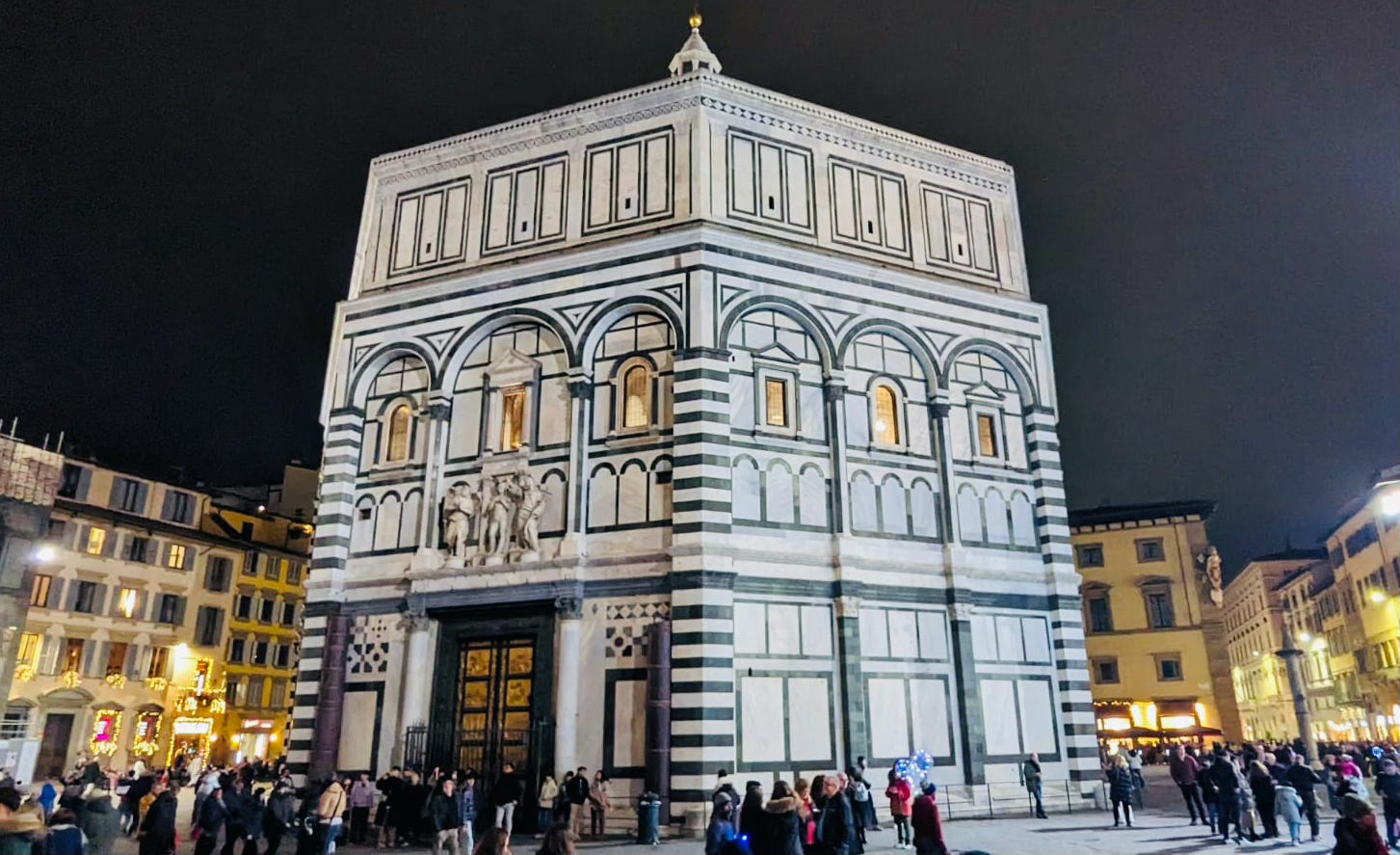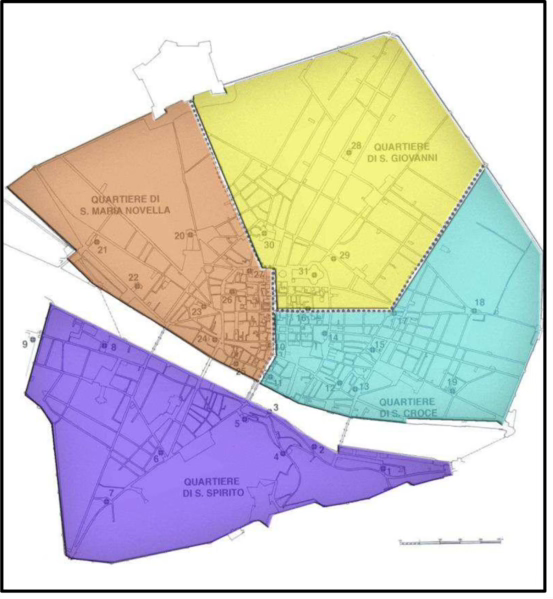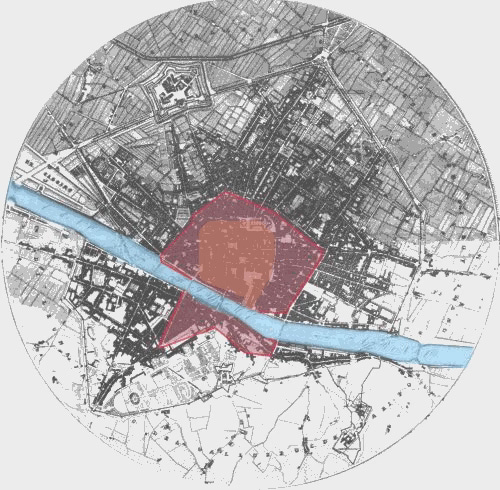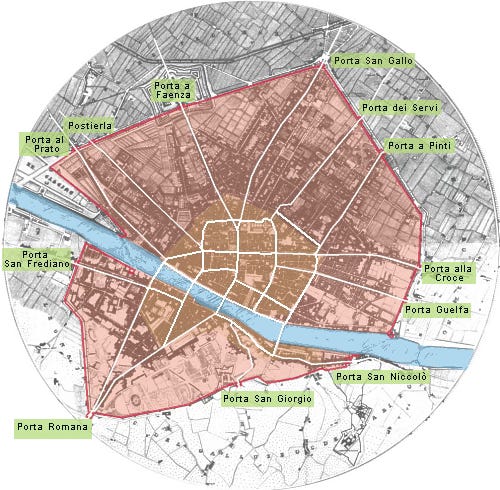To pave the way for my articles on the four historic neighborhoods in Florence, let’s do a canter through the expansion of the city in the Middle Ages, and its division into four quartieri.
The quartieri were determined after the last set of walls went up around the city and are named for the prominent place of worship in each. Santa Maria Novella, San Giovanni, Santa Croce, and Santo Spirito.
Florence’s economic boom and exponential growth in Middle Ages can be seen through the continuous enlargement of the city walls.
The set of walls from 1078, encircling the ancient Roman heart of the city, (rust color in the image below) are the ones Dante later referred to as “La Cerchia Antica”.
In 1173, a new set took in a larger area—extending across the river for the first time. (Pink color in image above.)
A century later, in 1284, another set were designed to encircle a greater area of Oltrarno as well as a far greater area north of the river. (Image below.)
This enormous effort was completed in 1333, and the walls remained for five centuries until Italy was united, and Florence unexpectedly and briefly became the capital of the Kingdom of Italy.
The architect Giuseppe Poggi was hired to adjust the cityscape to fit its new role. Influenced by Parisian boulevards, Poggi decided to destroy the impressive five-hundred-year-old walls and create encircling boulevards (Viali di Circonvallazione) in their place. Poggi would later be referred to as “il distruttore seriale” for this action.
As I mentioned, it was soon after the last set of walls was completed that the four neighborhoods were assigned.
Santa Maria Novella is the quartiere in the north-west quadrant of the city. Named for the Dominican Basilica of Santa Maria Novella.
Its banner: A golden sun on a blue field.
San Giovanni is the quartiere in the north-eastern quadrant of the city, named for the Baptistery of San Giovanni, which was consecrated in 1059. It’s clear why the baptistery was chosen over the cathedral since the cathedral of Santa Maria del Fiore was not finished and consecrated until 1436. Also, the Florentines consider the baptistery the most important building in the city.
The banner is an image of the baptistery on a blue background.
Santa Croce is the quartiere in the south-eastern quadrant of the city, named for the Franciscan Basilica of Santa Croce.
The banner is a gold cross on a blue field.
Santo Spirito is the quartiere across the river in the Oltrarno. Named for the Augustinian Basilica of Santo Spirito.
Banner: White dove descending a blue field.
Forthcoming: Four articles for paid subscribers on these quartieri with my favorite monuments, museums, and places to eat in each.


















Thanks for the explanation Chandi. It will help got my next visit to Florence!
This will be super useful when we are in Florence soon. Thank you!